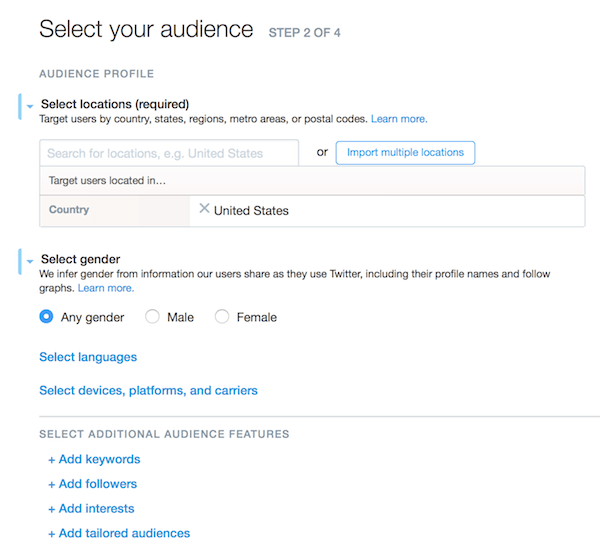 Social media ad campaigns are a great way to raise brand awareness, drive customers to your website, generate leads for your sales team, fill an open job posting, and ultimately increase revenue. Facebook, Twitter, Instagram, LinkedIn, Snapchat, Pinterest, and Slideshare all have paid advertising options that can help you meet all your business goals.
Social media ad campaigns are a great way to raise brand awareness, drive customers to your website, generate leads for your sales team, fill an open job posting, and ultimately increase revenue. Facebook, Twitter, Instagram, LinkedIn, Snapchat, Pinterest, and Slideshare all have paid advertising options that can help you meet all your business goals.
Everyone wants to get the most out of their social media ad campaigns, so we’ve compiled a few tips to help you do just that. Whether you’re just beginning to plan your first campaign or you’ve been running social ads for years, following these 6 tips will help you maximize your advertising budget and grow your business.
Establish your social media presence before adding paid ads.
Even without paid ads, social media networks can be a great place to promote your business and find new users or customers. Make sure you have a polished business account and (on most platforms) that you produce regular content before you supplement with paid ads.
Regular posts can help you grow your business, but they can also help you determine what you should put in your paid ads. Track your social media content to see which posts, offers, keywords, images, and videos your followers respond to. That information can give you a good idea about where to start when creating your paid ads.
Determine goals for each of your social media ad campaigns.
Before you start your campaign, think about what you want it to accomplish. That goal will help you determine what social media sites you advertise on, what kind of ad to purchase, and how to structure your campaign. You might want to drive more people to your website, increase installs for your app, increase sales of your product, fill a job opening, or something else entirely. Many social media sites even start the ad creation process by asking for your goals. Then they use that information to help you create a campaign that will best meet that goal.

Whatever your goals, social media can help you get there—so figure it out before you start planning your campaign.
Test your content.
Once you have an ad or two that you are happy with, it’s time for some testing. Make sure you have tracking in place on your desktop and mobile sites (we recommend using UTMs) and a system to keep your results organized. Once you have these, you can try out new ads on small groups of users or run split tests on specific parts of your ads (like the image or the content). You might also want to try different types of ads, targeting options (see below), and social media networks. This will help you refine your campaigns as you figure out which ads help your business the most.

Make use of targeting.
Every major social media network has a system that allows you to target specific groups of users. Facebook targeting, for example, lets you choose users by location, interests, gender, age, behaviors, and more. These tools can help you put your ads in front of people who are most likely to become customers, so you don’t waste your advertising budget on clicks or impressions from people who aren’t likely take advantage of what you offer. You can also experiment as you go to find out which targeting options are best for your business. Laying out a plan of who the target audience will greatly help you drive the right traffic to your ads. The biggest thing to remember is to make sure you do not back yourself into an advertising corner. You might think your target market is one demographic—but with some testing, you may find out it is actually a demographic that is entirely different. Run with this data as you collect it, as this could open up a whole new world of clients for your business.

Create ads that work best on mobile devices.
More and more people are accessing social media sites on their mobile devices, so your ad needs to look good on smaller screens. Make sure the images you choose are the correct size (check out Twitter’s image requirements as an example) so that they don’t appear distorted, fuzzy, or cropped. Also, make sure the text over the top of those images is kept at a minimum because it can become difficult to read as the images shrink to fit smaller screens. Some social media platforms will actually deny your ad if there is too much text over an image, so review each platform’s rules and use the tools they provide for measuring the ratio of text to image.
It’s also important to make sure your website, downloadable content, and coupons all work on mobile devices as well—especially if you are directing users to them through your social media campaigns. It is extremely frustrating for users to click on an ad on their phone to find that they can’t navigate the website they were directed to.
Try some of the smaller social media sites.
The biggest social media advertiser is Facebook, and with good reason. It has over a billion users, a host of targeting features, and lots of flexibility. For most businesses, it’s the best place to start.
When you have an established Facebook presence, it can be helpful to your business to branch out to other social media sites. If you’re looking to fill a job opening or sell to small businesses, LinkedIn is a great option. If you are in a creative industry, Pinterest can be very helpful. The majority of Snapchat’s users are under 25—perfect if your product appeals to this demographic. Branching out to the other social media sites can help boost your business even more.

Whether you’re just beginning to plan your social media ad campaigns, or you’ve been running them for years, these tips can help you get the most out of your advertising budget. Good luck!
